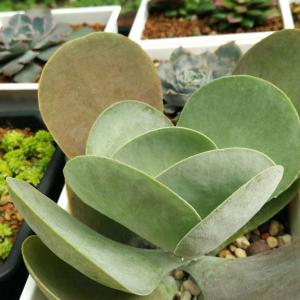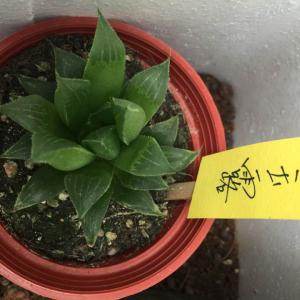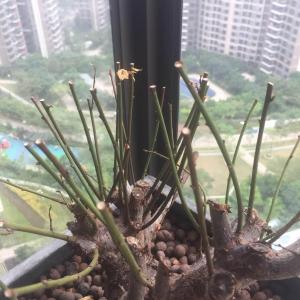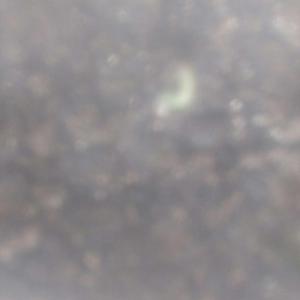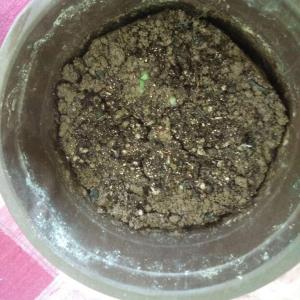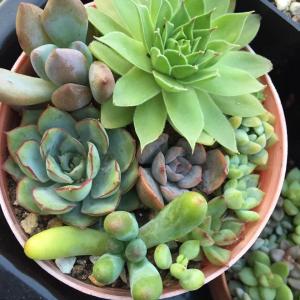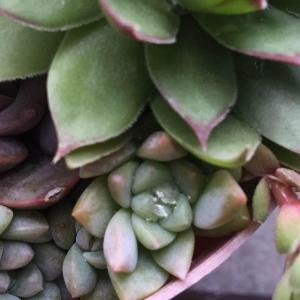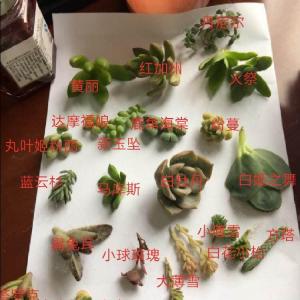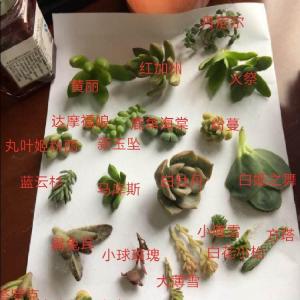文章
Miss Chen
2017年12月03日


孔雀草菊科、万寿菊属一年生草本植物。茎直立,分枝斜展。叶羽状分裂,头状花序单生,管状花花冠黄色,瘦果线形,花期7-9月。
原产墨西哥。分布于四川、贵州、云南等地,生于海拔 750-1600m的山坡草地、林中,或庭园栽培。具有药用价值。孔雀草的全草可入药,夏、秋季采收,鲜用或晒干。性味苦,平。有清热利湿,止咳之功效。用于咳嗽,痢疾,顿咳,牙痛,风火眼痛;外用于痄腮,乳痛。
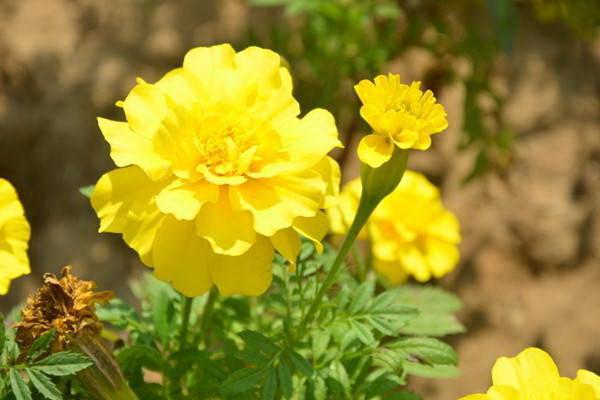
孔雀草的园林观赏价值
孔雀草花色艳丽,颜色繁多,有黄色、橘色、红色等多种颜色,还有重瓣等多种样式。单层的孔雀草清秀娟丽,重瓣的孔雀草更显大气美丽。
因为它的花朵好看,因此常被用作花坛装饰花卉,草坪上也常见到孔雀草的身影。可能许多人都不知道它叫做什么,但是在公园中、道路旁你一定见过它的模样!
另外在插花、花束中孔雀草也是常用切花种类之一。
孔雀草的药用价值
在导读中小编已经说过孔雀草可以入药,现在自然要来讲一下它的药用价值啦。
孔雀草的花和叶子都可以入药,具有清热解毒、化痰、补血的功效。对于治疗感冒、百日咳、气管炎等常见的病症都有着较为显著的作用。孔雀草野生环境中适宜在海拔较高的山地中,在俄罗斯高加索山区的居民经常食用孔雀草,据说能够起到益寿延年的效果。
孔雀草的花语
孔雀草的花语是爽朗的阳光。它还是每年的八月二十一日出生的人的生日专属花。它的花朵开放迎着太阳初升,花谢伴着夕阳西下,因此曾经一度被叫做“太阳花”。
0
1
文章
Miss Chen
2017年11月26日


麦冬百合科沿阶草属多年生常绿草本植物,根较粗,中间或近末端常膨大成椭圆形或纺锤形的小块根,茎很短,叶基生成丛,禾叶状,苞片披针形,先端渐尖,种子球形,花期5-8月,果期8-9月。
麦冬原产中国,日本、越南、印度也有分布。中国南方等地均有栽培。生于海拔2000米以下的山坡阴湿处、林下或溪旁。
麦冬的小块根是中药,有生津解渴、润肺止咳之效。
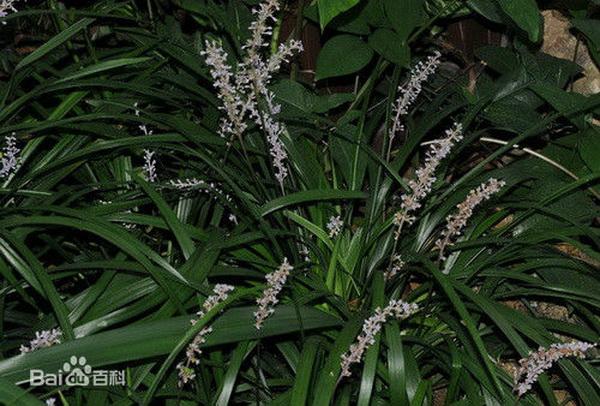
麦冬草的药用价值
在中药中,麦冬草的性味是甘、微苦、性微寒。麦冬草入药有着养肺的作用,麦冬草可以润肺清心,化痰止咳,还能抑制呕吐。《本草纲目》中认为麦冬是极好的养阴润肺的药品。麦冬还可以养胃,如果有厌食的情况,还可以用麦冬来开胃进食。
麦冬一般用来治疗肺燥干咳、心烦失眠、肠燥便秘等等症状。麦冬对心脑血管疾病也有很好的预防和治疗的作用,麦冬可以降低血糖、抗心律失常,对老年人非常好。但是麦冬不能长期服用,容易有副作用,要在医生的指导下服用。
麦冬草的园林作用
麦冬草虽然没有娇艳的花朵,麦冬草的花朵是非常朴素的淡紫色的,但是麦冬草十分容易种植,并且麦冬草一年四季都是常绿的,非常耐寒也非常耐旱,另一方面,麦冬草不容易发生病虫害,所以十分适合作为城市绿植。此外,虽然普通品种的麦冬草其貌不扬,但是近年来逐渐培养出了新品种的观赏价值较高的麦冬草,更加适合作为园林观赏。
麦冬草的经济价值
麦冬草的块茎有很多功效,是一种较为名贵的中草药,所以这是一种价值比较高的经济作物,在中医药中有广泛的作用。是具有一定的经济价值的。
0
0
文章
Miss Chen
2017年11月22日

Though generally grown as warm-season annuals, prized for their fast growth and juicy, sweet fruit, tomatoes (Lycopersicon esculentum) are technically frost-tender perennials in U.S. Department of Agriculture plant hardiness zones 9 through 11. Wilting in a tomato plant can be a symptom of several problems. Perk up your droopy tomatoes so you can continue to enjoy the fruits of your labor.

Water, Water, Everywhere
Tomatoes are 90 percent water. Thus, dehydration can lead to significant fruit loss and stunted growth. If you notice a plant wilting and the soil is dry, drought stress is likely the chief culprit. Tomatoes typically need watering once every four days in light, sandy soil and once a week if grown in heavier soil. When watering tomatoes, always use enough water to moisten the soil to a depth of 8 to 10 inches. Deep watering encourages the plant to extend its roots farther into the soil, increasing plant vigor and lowering risks of future drought stress. To conserve soil moisture, consider spreading mulch around the base of the plants, but keep mulch from touching the stems.
Sprinkle Some Salt
It may sound unconventional, but salt may do the trick. If you notice wilting, stunted leaf development and yellowing, the tomatoes may be suffering from a magnesium deficiency. Epsom salt is a naturally rich source of magnesium and may boost tomato growth and make the plant greener and more lush. Mix a tablespoon of Epsom salt in a gallon of tap water, pour it into a spray bottle and mist the solution onto the tomato plants. Coat all exposed surfaces of the plant evenly.
Check for Pests
Tomato plants occasionally suffer from pest infestations, and this may cause plant stress, wilting, leaf drop and fruit loss. Common tomato pests that cause wilted foliage include aphids and whiteflies, which suck on the plant's juices. Aphids appear as little green, black, red or brown spots on the plant. Whiteflies, as their name implies, are tiny flies with a dusty white appearance that tend to group on the underside of leaves. Both pests can be managed by spraying tomato plants with a strong blast of water from a backyard garden hose. This dislodges and kills pests and can keep pest populations at a level low enough that they don't cause lasting harm to the tomatoes.

Or, try an insecticidal soap. Make your own at home by mixing 5 tablespoons of liquid dish soap in a gallon of water. Spray the soapy solution onto affected portions of the tomato plant. The solution kills aphids and whiteflies on contact. Repeat once a week as needed.
Fight Fungus
Inspect the wilted foliage. If you see brown or black growths on the leaves, the tomatoes may be suffering from a fungal infection. Such problems are best controlled and prevented with proper sanitation. Wipe a pair of pruning shears with rubbing alcohol to sterilize it, then snip off any affected stems and leaves that have mold or other fungal growths.
Once you remove diseased plant parts, prevent future disease by monitoring your tomato care practices. Change your watering practices to ensure you're only watering at the base of each tomato plant, since overhead irrigation and damp foliage makes leaves susceptible to disease. Always use mulch, as that prevents soil from splashing up on your tomatoes which can increase the risks of plant disease. Finally, the next time you plant tomatoes, plant them in a new section of your backyard and space them farther apart to ensure proper air circulation among the plants. Ideally, plants should be approximately 2 feet apart.

Water, Water, Everywhere
Tomatoes are 90 percent water. Thus, dehydration can lead to significant fruit loss and stunted growth. If you notice a plant wilting and the soil is dry, drought stress is likely the chief culprit. Tomatoes typically need watering once every four days in light, sandy soil and once a week if grown in heavier soil. When watering tomatoes, always use enough water to moisten the soil to a depth of 8 to 10 inches. Deep watering encourages the plant to extend its roots farther into the soil, increasing plant vigor and lowering risks of future drought stress. To conserve soil moisture, consider spreading mulch around the base of the plants, but keep mulch from touching the stems.
Sprinkle Some Salt
It may sound unconventional, but salt may do the trick. If you notice wilting, stunted leaf development and yellowing, the tomatoes may be suffering from a magnesium deficiency. Epsom salt is a naturally rich source of magnesium and may boost tomato growth and make the plant greener and more lush. Mix a tablespoon of Epsom salt in a gallon of tap water, pour it into a spray bottle and mist the solution onto the tomato plants. Coat all exposed surfaces of the plant evenly.
Check for Pests
Tomato plants occasionally suffer from pest infestations, and this may cause plant stress, wilting, leaf drop and fruit loss. Common tomato pests that cause wilted foliage include aphids and whiteflies, which suck on the plant's juices. Aphids appear as little green, black, red or brown spots on the plant. Whiteflies, as their name implies, are tiny flies with a dusty white appearance that tend to group on the underside of leaves. Both pests can be managed by spraying tomato plants with a strong blast of water from a backyard garden hose. This dislodges and kills pests and can keep pest populations at a level low enough that they don't cause lasting harm to the tomatoes.

Or, try an insecticidal soap. Make your own at home by mixing 5 tablespoons of liquid dish soap in a gallon of water. Spray the soapy solution onto affected portions of the tomato plant. The solution kills aphids and whiteflies on contact. Repeat once a week as needed.
Fight Fungus
Inspect the wilted foliage. If you see brown or black growths on the leaves, the tomatoes may be suffering from a fungal infection. Such problems are best controlled and prevented with proper sanitation. Wipe a pair of pruning shears with rubbing alcohol to sterilize it, then snip off any affected stems and leaves that have mold or other fungal growths.
Once you remove diseased plant parts, prevent future disease by monitoring your tomato care practices. Change your watering practices to ensure you're only watering at the base of each tomato plant, since overhead irrigation and damp foliage makes leaves susceptible to disease. Always use mulch, as that prevents soil from splashing up on your tomatoes which can increase the risks of plant disease. Finally, the next time you plant tomatoes, plant them in a new section of your backyard and space them farther apart to ensure proper air circulation among the plants. Ideally, plants should be approximately 2 feet apart.
0
0
文章
Miss Chen
2017年11月16日

Most homegrown tomato plants produce between 3 and 9 pounds of fruit in one season. Two or three plants are usually sufficient for a family of four for fresh eating. Plant two varieties, such as a cherry tomato for salads and a paste or slicing tomato.

Varieties
The yield of tomato plants depends in part on the variety. Beefmaster, a slicing tomato, produced almost 10 pounds of fruit in a Washington State University study, while Yellow Perfection, another slicing tomato, produced just under 4 pounds. Indeterminate tomatoes produce more fruits than determinate types generally, because they continue fruiting until the first frost. Determinate types produce one crop and then dwindle.
Growing Conditions
Hot weather and drought adversely affect tomato production. Tomatoes drop their blossoms, failing to produce fruit when temperatures remain above 85 degrees Fahrenheit, according to Purdue University's website. Drought, disease and poor soil also limit tomato growth. Plant disease-resistant varieties and provide good growing conditions for the most abundant yields.

Staking Methods
Indeterminate varieties grow on sprawling, robust vines. Gardeners may choose to prune and stake these plants or let them grow on the ground. Pruned and staked varieties produce fewer, but larger tomatoes, and are more prone to sun scald. Those grown on the ground produce smaller tomatoes in larger quantities. They have more problems with soil diseases. In general, pruning and staking is the preferred practice for producing high-quality tomatoes.

Varieties
The yield of tomato plants depends in part on the variety. Beefmaster, a slicing tomato, produced almost 10 pounds of fruit in a Washington State University study, while Yellow Perfection, another slicing tomato, produced just under 4 pounds. Indeterminate tomatoes produce more fruits than determinate types generally, because they continue fruiting until the first frost. Determinate types produce one crop and then dwindle.
Growing Conditions
Hot weather and drought adversely affect tomato production. Tomatoes drop their blossoms, failing to produce fruit when temperatures remain above 85 degrees Fahrenheit, according to Purdue University's website. Drought, disease and poor soil also limit tomato growth. Plant disease-resistant varieties and provide good growing conditions for the most abundant yields.

Staking Methods
Indeterminate varieties grow on sprawling, robust vines. Gardeners may choose to prune and stake these plants or let them grow on the ground. Pruned and staked varieties produce fewer, but larger tomatoes, and are more prone to sun scald. Those grown on the ground produce smaller tomatoes in larger quantities. They have more problems with soil diseases. In general, pruning and staking is the preferred practice for producing high-quality tomatoes.
0
0
文章
Miss Chen
2017年11月16日

Growing strawberries (Fragaria × ananassa) requires some care, but the freshly picked, sweet, juicy fruits are worth the effort. Strawberries grow as perennials in U.S. Department of Agriculture plant hardiness zones 5 through 8, and in USDA zones 9 and 10 they're usually grown as cool-season, annual plants. Three kinds of are available: June-bearing, everlasting and day neutral. June-bearing strawberries fruit in early summer, everlasting varieties fruit in spring, summer and fall, and day neutral varieties bear fruit throughout the growing season. All three types grow best in full-sun sites and well-drained soils.

Soil, Light and Spacing
For the largest crop of fruits, grow strawberry plants in soil rich in organic matter and in a site that receives at least six hours of direct light per day. Space June-bearing strawberries 18 to 24 inches apart in rows 4 feet apart, and space everlasting and day neutral varieties 1 foot apart in a bed of two or three rows spaced 1 foot apart. June-bearing strawberries produce shoots called runners that root and grow into new plants on either side of their rows, creating strawberry beds 2 feet wide. Everlasting and day neutral strawberry plants produce few runners and these are removed, so they grow as single plants.
Water and Fertilizer
Moist growing sites and fertilizer encourage strawberries to grow healthily. Strawberries need about 1 inch of water each week when the weather is dry during the growing season. Apply the water to the base of the plants, avoiding the leaves. Over-fertilizing strawberries causes excessive leafy growth at the expense of fruit, but plants benefit from an annual fertilizer application after harvest. Dilute 2 tablespoons of a 10-10-10 liquid fertilizer in 1 gallon of water, and pour 1 to 2 cups of the solution at the base of each strawberry plant.
Mulch for Strawberries
Strawberries benefit from mulching, which suppresses weeds, conserves soil moisture and protects plants from frost. Remove weeds from around strawberry plants, and spread a 2-inch layer of an organic mulch such as garden compost or leaf mold, avoiding the plant stems. In areas where fall below 20 degrees Fahrenheit, spread a 3- to 4-inch layer of straw over plants in late fall. In spring, when young, yellow foliage appears, pull mulch away from the plants but replace it when frosts are predicted. Straw mulches can also be spread beneath developing fruit to keep it off the ground.

Strawberry Pruning
General care for strawberries includes pruning blossoms and runners. Pinch the blossoms off June-bearing strawberries in their first season to encourage the plants to develop strong root systems and bear a large crop the following year. Pinch the blossoms off everlasting and day neutral types until early July, which helps the plants establish before putting energy into growing fruit. Prune the runners from everlasting and day neutral plants whenever they appear. Sterilize pruning shears by wiping a cloth soaked in rubbing alcohol over the blades, and cut the runners where they join the rest of the plant. Sterilize the shears again when you've finished.
Strawberry Renovation
June-bearing strawberries growing as perennials provide crops for three or four years with annual renovation. After harvest, mow the strawberry beds to remove the old foliage. Set the mower blades to 1 to 1 1/2 inches above the ground. Rake off the leaves, and narrow the beds to 6 to 12 inches wide by digging out plants on both sides, and remove all weeds. Fertilize the strawberry plants with a granular or powder 10-10-10 fertilizer spread at a rate of 1 pound per 100 square feet, and mix the fertilizer lightly into the soil surface. Water the renovated patch for the rest of the growing season, applying 1 inch of water per week during dry weather.

Soil, Light and Spacing
For the largest crop of fruits, grow strawberry plants in soil rich in organic matter and in a site that receives at least six hours of direct light per day. Space June-bearing strawberries 18 to 24 inches apart in rows 4 feet apart, and space everlasting and day neutral varieties 1 foot apart in a bed of two or three rows spaced 1 foot apart. June-bearing strawberries produce shoots called runners that root and grow into new plants on either side of their rows, creating strawberry beds 2 feet wide. Everlasting and day neutral strawberry plants produce few runners and these are removed, so they grow as single plants.
Water and Fertilizer
Moist growing sites and fertilizer encourage strawberries to grow healthily. Strawberries need about 1 inch of water each week when the weather is dry during the growing season. Apply the water to the base of the plants, avoiding the leaves. Over-fertilizing strawberries causes excessive leafy growth at the expense of fruit, but plants benefit from an annual fertilizer application after harvest. Dilute 2 tablespoons of a 10-10-10 liquid fertilizer in 1 gallon of water, and pour 1 to 2 cups of the solution at the base of each strawberry plant.
Mulch for Strawberries
Strawberries benefit from mulching, which suppresses weeds, conserves soil moisture and protects plants from frost. Remove weeds from around strawberry plants, and spread a 2-inch layer of an organic mulch such as garden compost or leaf mold, avoiding the plant stems. In areas where fall below 20 degrees Fahrenheit, spread a 3- to 4-inch layer of straw over plants in late fall. In spring, when young, yellow foliage appears, pull mulch away from the plants but replace it when frosts are predicted. Straw mulches can also be spread beneath developing fruit to keep it off the ground.

Strawberry Pruning
General care for strawberries includes pruning blossoms and runners. Pinch the blossoms off June-bearing strawberries in their first season to encourage the plants to develop strong root systems and bear a large crop the following year. Pinch the blossoms off everlasting and day neutral types until early July, which helps the plants establish before putting energy into growing fruit. Prune the runners from everlasting and day neutral plants whenever they appear. Sterilize pruning shears by wiping a cloth soaked in rubbing alcohol over the blades, and cut the runners where they join the rest of the plant. Sterilize the shears again when you've finished.
Strawberry Renovation
June-bearing strawberries growing as perennials provide crops for three or four years with annual renovation. After harvest, mow the strawberry beds to remove the old foliage. Set the mower blades to 1 to 1 1/2 inches above the ground. Rake off the leaves, and narrow the beds to 6 to 12 inches wide by digging out plants on both sides, and remove all weeds. Fertilize the strawberry plants with a granular or powder 10-10-10 fertilizer spread at a rate of 1 pound per 100 square feet, and mix the fertilizer lightly into the soil surface. Water the renovated patch for the rest of the growing season, applying 1 inch of water per week during dry weather.
1
0



